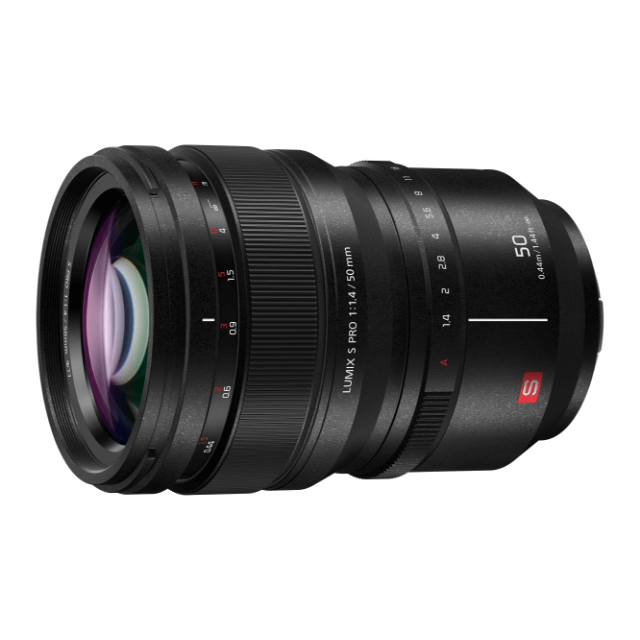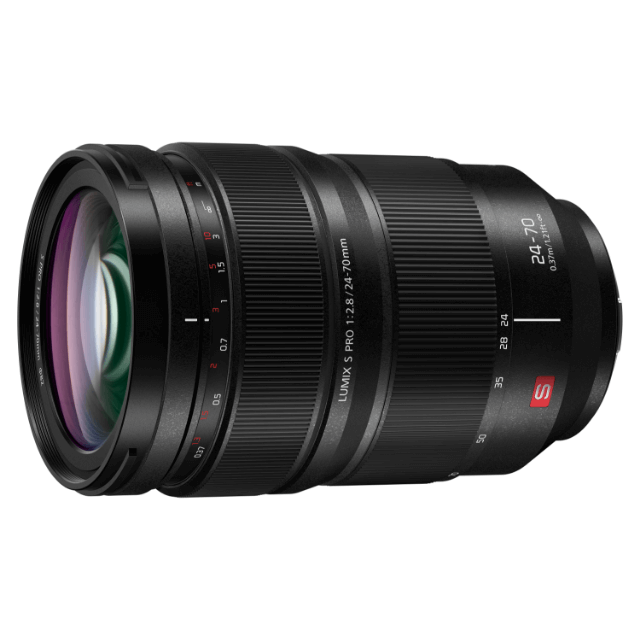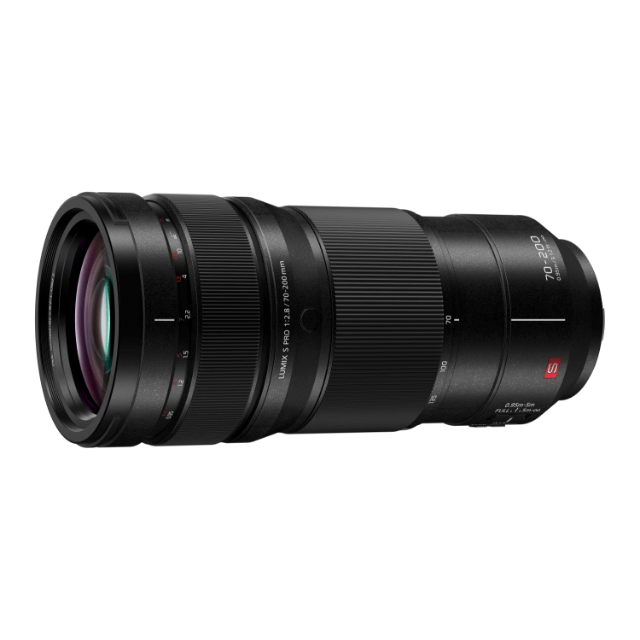
This is the Optical Design Department_Fourth Edition [LUMIX S 70-300 mm F4.5-5.6 MACRO O.I.S.]
Hello, everyone.
"This is the Optical Design Department" is a series that takes an in-depth look at LUMIX lenses. In "This is the Optical Design Department", we in the Optical Design Department will explain the lens designs and their features, as well as the dedication and philosophy behind our work that you will not find in our catalogues or websites.
For those who are considering purchasing a camera lens, we encourage you to learn more about the design philosophy behind LUMIX lenses, and for those who already own a LUMIX lens, we hope you enjoy learning about the unparalleled attention to detail and thought that goes into the superb image quality you enjoy in your photography.
This is an article that explains various lenses written by developers full of technical jargon. By reading this, you too will be peering into the depths of enthusiasm for lens collecting.
The fourth article is about LUMIX S 70-300 mm F4.5-5.6 MACRO O.I.S., explained by Kitada.
Contents
S PRO lenses and S lenses
So far in 'This is the Optical Design Department', we have focused on S PRO lenses, but as this is the first article in the series covering S lenses, I will begin by introducing the S lenses.
LUMIX offers two lines of lenses: S PRO lenses and S lenses. S PRO lenses are planned, designed, developed, and manufactured according to LUMIX's own strict S PRO lens standards.
S lenses are designed with a focus on portability and usability, as well as high optical performance.
These include the LUMIX S 20-60 mm F3.5-5.6, which offers an ultra-wide angle of 20 mm, and the F1.8 prime series, which offers consistent image quality, size, and operability.
The telephoto zoom lens that S lens aims to be
During the development of the 70–300 mm lens, discussions were held with the Product Planning Department to determine the objectives for the S-series telephoto zoom lens, and the following three product concepts were selected for development.
1. Outstanding image rendering performance and high-quality bokeh across the entire zoom range
2. Telephoto macro capability for creative visual expression
3. Excellent portability and operability in any shooting environment
These concepts allow you to photograph subjects such as trains and aeroplanes using the 300 mm telephoto lens, or flowers and insects using the telephoto macro function's long working distance, all without having to get close to the subject.
This section explains concepts 1 and 2, which are largely dependent on the optical design.
Outstanding image rendering performance and high-quality bokeh across the entire zoom range
The diagram below shows the lens configuration of the S-R70-300.

The 7-group positive-negative-positive-positive-negative-positive-negative zoom lens configuration, viewed in order from the subject, thoroughly corrects aberrations and delivers high image rendering performance across the entire zoom range.
The lens configuration consists of 17 elements in 11 groups, with one UED lens and two ED lenses positioned appropriately to minimise chromatic aberration, which tends to become more pronounced in telephoto zoom lenses.
As you can see from the lens configuration diagram, the LUMIX S 70-300 mm F4.5-5.6 MACRO O.I.S. does not use aspherical lenses.
In general, increasing the number of aspherical lenses makes it easier to achieve both compact size and high optical performance. However, it also increases the likelihood of producing ring-shaped bokeh—concentric patterns that resemble tree rings within a spherical blur.
We possess advanced technology for processing aspherical lenses, allowing us to make ring bokeh as inconspicuous as possible. However, this involves a specialised manufacturing process, which increases costs. For this reason, this lens has been optically designed without an aspherical lens, allowing you to enjoy beautiful bokeh without ring patterns — all at an affordable cost.
In addition, the optical design of the lens ensures that spherical aberration is properly controlled throughout the entire zoom range, resulting in a soft bokeh rendering with minimal double-line bokeh. The photo below shows an example of bokeh shot with this lens. The bokeh is beautiful, with no visible ring lines.

Telephoto macro capability for creative visual expression
When the focal length is 300 mm with a shooting magnification of 0.5x (half macro), the focus movement from infinity to the minimum focusing distance (focus stroke) increases significantly, resulting in greater aberration variations during focusing.
While we cannot show the movement of each lens group during zooming, we carefully designed the movement of the 6 lens groups located behind the focus group to ensure sufficient focus stroke. By placing lens groups with both positive and negative power behind the focus group, we were able to minimise aberration variations during focusing.
To achieve fast and accurate autofocus, even with the longer focus stroke, it was necessary to reduce the weight of the lenses in the focus group.
In the optical design of the LUMIX S 70-300 mm F4.5-5.6 MACRO O.I.S., the lens group with the smaller outer diameter is used as the focus lens group, and lightweight glass materials are used to help reduce its weight.
This photo shows an acorn taken with a 300 mm at half macro. The background is significantly blurred, allowing the subject to stand out.

These are some of the optical design features of the LUMIX S 70-300 mm F4.5-5.6 MACRO O.I.S.
The development of interchangeable lenses involves not only optical design but also other technical designs such as mechanism design, actuator design, control design, and electrical design.
Let's take a look at the mechanical design of the LUMIX S 70-300 mm F4.5-5.6 MACRO O.I.S. as an example.
The optical design of this lens is based on a seven-component zoom configuration to deliver excellent image rendering performance throughout the zoom range, and zooming involves moving five lens groups along the optical axis using a cam mechanism.
To achieve this, a total of 17 cam grooves had to be arranged—an extremely challenging task given the limited space available—and the operability of the zoom ring had to be improved.
Thanks to close collaboration between the optical and mechanical design teams, the zoom paths of each lens group were optimally designed to a precision of 0.01 mm. The high- density layout of 17 cam grooves successfully enabled multi-component lens movement while also delivering a smooth, high-quality zooming experience.
The diagram below shows a view of the barrel of this lens. You can see that the grooves are intricately arranged. Not all of them are marked with arrows, but the hollowed out areas are all cam grooves.

View of the cam barrel
Commitments of the designers not shown in the catalogue
Interchangeable lenses have features that are not shown in the catalogue. A typical example is 'bokeh'.
The LUMIX S 70-300 mm F4.5-5.6 MACRO O.I.S. designers also paid careful attention to the star effect, which will be explained in this section.
The star effect refers to the radial lines that appear around a light source when shooting a point light source with the aperture stopped down, resulting from the diffraction phenomenon caused by the aperture blades. Consequently, the shape of the aperture blades is crucial.
The shape of the aperture blades also influences the appearance of blur when the lens is stopped down to a small aperture. This lens has, therefore, been designed to deliver both beautiful bokeh and a striking star effect.
The diagram below shows the aperture blades as viewed from the front. The orange area represents a single aperture blade, and there are eleven blades in total, overlapping each other.

11-blade circular aperture
This is a photo of Itami Airport taken from the bank of the Senri River. You can see the impressive star effect in this photo.

Itami Airport photographed from the bank of the Senri River
Lastly

This article has provided an overview of the optical design of the LUMIX S-series telephoto lens LUMIX S 70-300 mm F4.5-5.6 MACRO O.I.S.
If you already own this lens, we hope you will enjoy its excellent image rendering, soft bokeh, and natural, striking reproduction.
We also hope you will take advantage of its versatility in a wide variety of situations—from capturing plants and insects with the half-macro function, which is rare for a telephoto lens, to shooting night scenes that showcase its impressive star effect.






